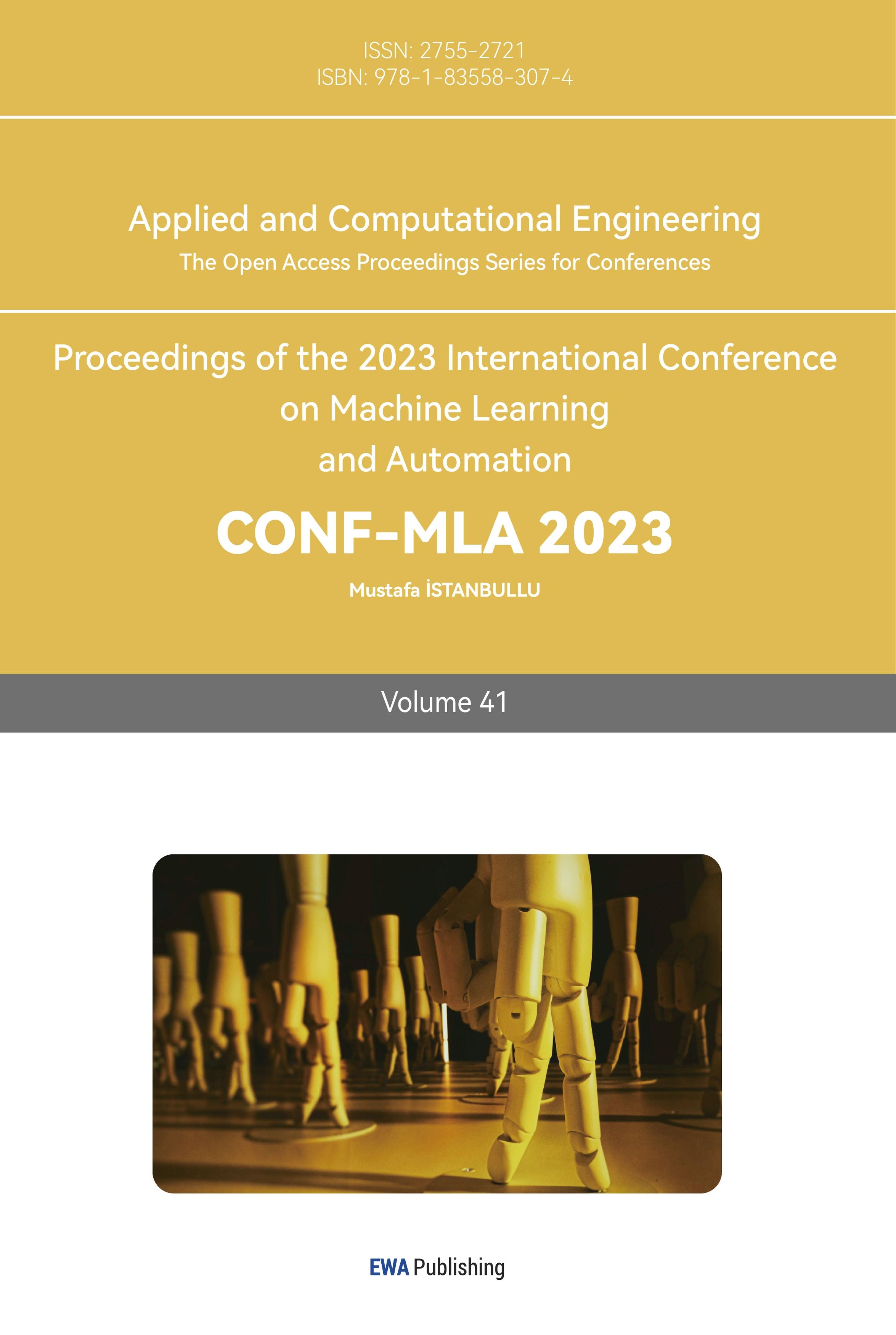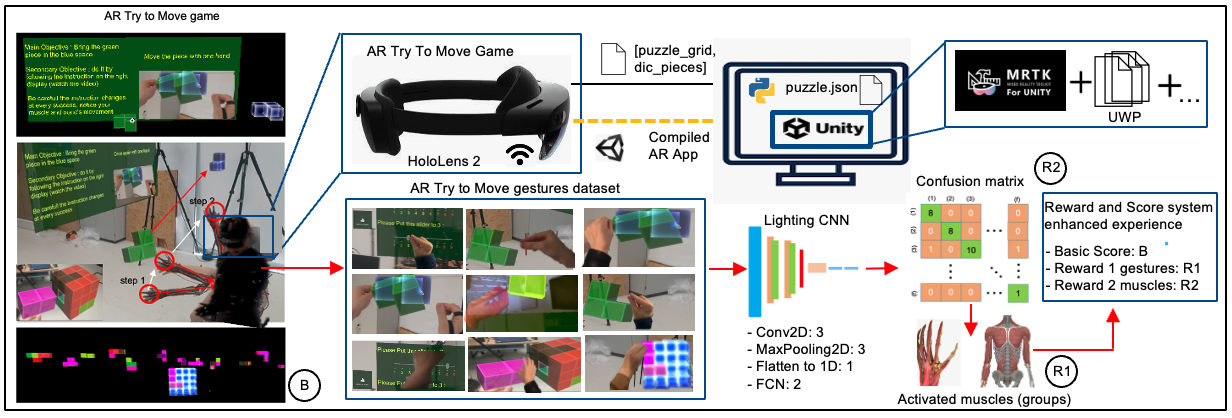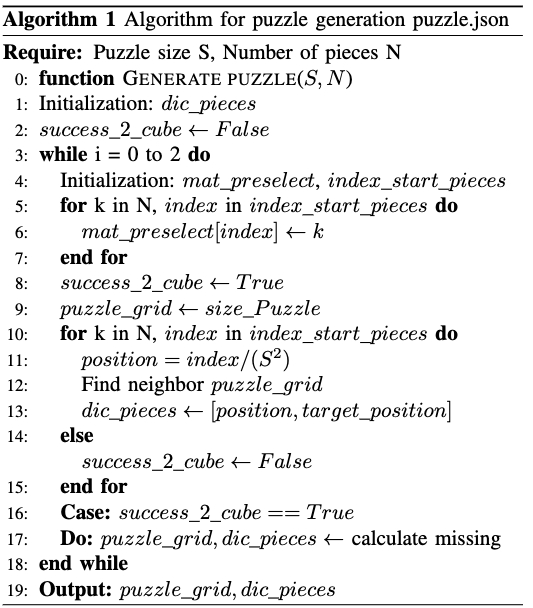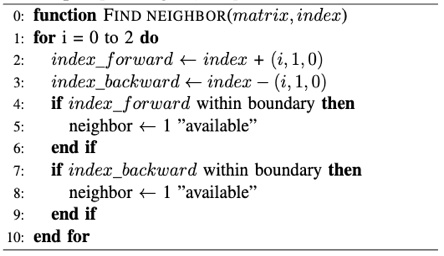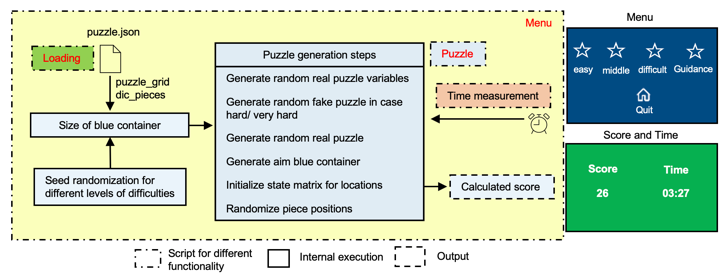1. Introduction
AR, a technology that superimposes virtual elements onto the physical world, has garnered substantial attention in recent times due to its characteristics, real and virtual combined, interactive and 3D spatial context [1]. As the demand for extended and monotonous rehabilitation training for post-stroke patients has grown [2], and with the rise of digital medicine to facilitate home-based training, the integration of AR technology provides a promising solution. Khademi et al. designed an AR program for post-stroke patients with upper-limb impairments. This program detects essential hand movements and offers tactile feedback interactively, allowing users to engage in activities pouring water, and more for a lifelike experience [3]. Chen et al. designed an AR game that integrates hand-controlled virtual football interaction with traditional Bobath therapy. The game incorporates virtual bone joint overlays and football movements onto the patient’s video feed, facilitating the assessment of lower-limb balance [4]. In other research [5][6][7], various AR games were introduced with feedback systems. These games enabled users to engage in activities like car driving, board games, and Pokémon Go, with their performance tracked and showcased for remote transmission to the therapist. Existing AR applications exhibit the potential to harness the benefits of AR, enhancing interactivity and providing valuable guidance in monotonous training processes. However, prevalent AR games tend to suffer from limited design scope and overly simplistic gameplay. These limitations hinder their ability to offer users a truly immersive and ego experience, such as combining their musculoskeletal system information in real-time during rehabilitation training.
We want to enhance users’ enjoyment and interactive engagement by leveraging multiple sensory channels (visual, auditory, and fitness-related stimuli), all while maintaining the same level of effectiveness as that achieved in a traditional rehabilitation institute. We selected Microsoft® HoloLens 2 HMD as an implementation unit, because of its good performance, and ease of development. To reach the goal above, this paper made the following contribution, and one pipeline is represented in Figure 1:
• design one AR puzzle game named Try to Move incorporated a variety of rehabilitation training interactive gestures, making it engaging and diverse for users to generate a wide range of upper limb movements.
• collect one user multiple interactive gestures AR game dataset, classify all multiple interactive gestures in 16 classes with a lighting CNN model achieved high accuracy, forming a scoring and reward system integrated with multiple factors in AR game.
|
Figure 1. Pipeline of ego-perspective AR Try to Move game. |
2. Methodology
As discussed earlier, in order to enhance the enjoyment of rehabilitation and make remote training more effective, this paper proposes in this section how to design the AR Try to Move game with more upper-limb rehabilitation conductive multiple multiple interactive gestures in visible areas and spatial movement in HoloLens 2, and the creation of lighting CNN for multiple interactive gestures classification. We discuss our development in 2 parts as follows.
2.1. Design for AR Try to Move game
Based on Table 1 proposed rehabilitation process conducive multiple interactive gestures [8][9], this work aims to let users take those gestures more and reward users more with more interactive gestures and muscle activation. This work summarizes the mainly involved human upper-limb muscle (group) while performing the above movement and gestures based on previous research and extensive literature review. This work designed an AR Try to Move game (Figure 1) with four different levels of difficulty. Users need to complete our game by taking colorful pieces with different shapes into one blue target container. Every interaction by “taking” in our game will perform the multiple interactive gestures below. The AR game design part refers to this pipeline.
Table 1. Propose rehabilitation conducive gestures and participating muscle (group). | ||||
Participating motor part | Main participating muscle (group) | N | Multiple interactive gesture | |
Upper/lower limb | Involved upper/lower limb body muscles | - | Move forward (1) and backward(2), turn right (3) and left (4) | |
Forearm, Humerus | Biceps Brachii, Triceps Brachii, Deltoid, Trapezius, Subscapularis, Subclavius, Teres Minor, Infraspinatus, Brachioradialis [10][11] | 9 | Upper and front arm folding movement (5) | |
Forearm, Hand | Flexor Carpi Radialis, Flexor Carpi Ulnaris, Palmaris Longus, Flexor Digitorum Superficialis, Flexor Digitorum Profundus, Extensor Carpi Radialis Brevis, Extensor Carpi Radialis Longus, Extensor Carpi Ulnaris, Extensor Digitorum, Extensor Digiti Minimi [13][14][15] | 10 | Movement of the forearm drives movement of the wrist (6) | |
Forearm, Hand | Extensor Digitorum, Extensor Indicis, Extensor Digiti Minimi, Extensor Pollicis Longus, Extensor Pollicis Brevis, Extensor Carpi Radialis Longus [12][13][14][15] | 6 | Wrist extension (7) | |
Forearm, Hand | Flexor Digitorum Superficialis, Flexor Digitorum Profundus, Flexor Pollicis Longus, Flexor Carpi Radialis, Flexor Carpi Ulnaris, Palmaris Longus [12][13][14] [15] | 6 | Wrist flexion (8) | |
Forearm, Hand | Extensor Digitorum, Extensor Indicis, Extensor Digiti Minimi, Extensor Pollicis Longus, Extensor Pollicis Brevis, Extensor Carpi Radialis Longus, Extensor Carpi Ulnaris, Extensor Digitorum Communis [12][16][17] | 8 | Open hand (9) | |
Forearm, Hand | Flexor Digitorum Superficialis, Flexor Digitorum Profundus, Flexor Pollicis Longus, Flexor Carpi Radialis, Flexor Carpi Ulnaris, Palmaris Longus, Flexor Pollicis Brevis, Flexor Digiti Minimi Brevis [12][16][17] | 8 | Close hand (10) | |
Forearm, Hand, Finger | Flexor Digitorum Superficialis, Flexor Digitorum Profundus, Extensor Digitorum, Extensor Indicis, Interossei Muscles, Lumbrical Muscles, Thenar and Hypothenar Muscles, Flexor Carpi Radialis, Extensor Carpi Radialis Longus [12][16][17][18] | 10 | Tap with index-finger (a) | |
Forearm, Hand, Finger | Flexor Digitorum Superficialis, Flexor Digitorum Profundus, Flexor Pollicis Longus, Flexor Carpi Radialis, Flexor Carpi Ulnaris, Thenar Muscles, Hypothenar Muscles, Lumbrical Muscles, Interossei Muscles, Extensor Muscles [12] [16][17][18] | 10 | All-finger grasping (b) | |
Forearm, Hand, Finger | Thenar Muscles, Lumbrical Muscles, Interossei Muscles, Flexor Pollicis Longus, Flexor Digitorum Superficialis, Flexor Digitorum Profundus, Extensor Muscles, Opponent Muscles [12][16][17] | 8/ 16 | Index-Thumb-finger grasping (single hand (c) and double hands (d)) | |
Humerus, Forearm | Biceps Brachii, Supinator [13][16] | 2 | Turn the palm upwards (e) | |
Humerus, Forearm | Pronator Teres, Pronator Quadratus, Brachioradialis [13][16] | 3 | Turn the palm downwards (f) | |
2.1.1. Generate random puzzle
First, we randomly generate the number of pieces, the shape, and the size of the target container required for game design according to the following algorithm 1 in Figure 2 in Python. One colorful piece is a combination of 3D squares. Every piece’s name and position are jointly defined in a matrix (e.g. piece 2 with 2 squares defines all 3D matrix locations where the number 2 can be found). To imitate the randomness of the piece appearance in the real 3D puzzle, realize the pre-defined multiple interactive gestures and spatial movement, means that: 1.) the location and orientation of pieces are random adjacent to each other along the Unity axis, 2) all pieces should be separately located in different positions in the AR environment. The random puzzle grid with pieces dictionary for different levels of 4 difficulty is generated. It takes the input puzzle size S and number of pieces N for locations in a 3D matrix filled with N (simultaneously as “name of the pieces”). As iteration begins, the algorithm 1 tries to extend to a free adjacent location in the next step. For any free location with the true label, the extension is a success, and the number of the piece N replaces the last value. After that, if still not all locations are successfully placed (in case of success_2_cube == True), it calculates the number of missing pieces that need to be added to the puzzle grid to ensure complexity. The JSON files with output puzzle_grid and dic_pieces are generated for game design in Unity.
|
|
Figure 2. Pipeline of ego-perspective AR Try to Move game, Algorithm 1 contains the function GENERATE PUZZLE and FIND NEIGHBOR, the right below part shows the AR game structure. | |
2.1.2. Design Try to Move game in Unity
To enable users to move themselves and achieve multiple upper-limb interactions in a more realistic and fantastic real-world environment, we designed an AR Try to Move game in Unity for compilation in HoloLens 2. In Unity, the main structure, execution process, menu, and scoring board are implemented and shown in Figure 2. Once one button of the menu is activated, it then reads the generated puzzle.json file containing the dimension puzzle_grid and vector in puzzle dictionary dic_pieces first. With randomized seeds equivalent for presenting the different difficulties, a random number of colorful pieces and a blue puzzle container are randomized and generated through the puzzle generation steps in the puzzle function (grey block in Figure 2). While playing, the score is calculated with the Formula in Table 2 after finishing the puzzle game or time running out by time measurement.
When users want to increase the difficulty of our AR Try to Move game, they can freely increase the volume of the container, whose current size is 4x4x4, or change the seed number of generated puzzle pieces with their needs, making the game more personalized and diverse in style. The common issues in game design with faster gameplay and higher score rewards time by time due to experience can be solved with our design approach.
2.2. Classification of the multiple interactive gestures with CNN
Based on our scoring system design, users will get a basic score about how well they have completed the game with limited time when the game is over. In addition, we obtained 2 reward scores based on the times of multiple interactive gestures and the number of muscle activations during the game, which is estimated by a lighting CNN. For rewards estimation, we designed one lighting CNN and a confusion matrix. CNN performs well in image processing. Therefore, a lighting CNN can complete the task of identifying and classifying multiple interactive gestures with high accuracy for our collected dataset with 16 classes of multiple interactive gestures in our game. Our CNN consists of three convolutional layers for upper limb feature extraction, followed by max-pooling layers for downsampling, a flattening layer, and two fully connected layers for classification, which have been presented in Figure 1.
3. Experiment
To verify that our game can allow users to take more upper limb multiple interactive gestures for more effective and enjoyable training, we recorded the complete situation of users when using HoloLens 2 to experience different levels and made it into our AR interactive gesture dataset. It contains all the gestures of 16 times game-playing, which first three times of 4 levels record the situation that users can obtain all 3 scores. The last time recording of 4 levels only contained the user’s basic score.
Using our dataset we trained our CNN with a learning rate of 10-3, Adam as Optimizer and sparse categorical cross-entropy loss. We recorded after training the confusion matrix, which presents the times of the users’ multiple interactive gestures ((1)-(10) and (a)-(f)) mentioned in Table 2 during playing as R1 in its diagonal, the number of participating muscle activations involved in each interactive gesture (R2). The classification accuracy after training reached 98.7% or higher, which resulted in a total of no more than 5 misclassified multiple interactive gestures in the nondiagonal position in every confusion matrix. The calculation of the basic score follows the guideline: within the specified time, the less time it takes, the higher the basic score will be. Due to our game design with random generalization, higher scores due to higher proficiency are effectively avoided. Summarized with the confusion matrix of two rewards, a final score (F) came out.
Table 2. Comparative results: recording of B and classification for R1, R2, and calculation F for 16 classes of upper limb multiple interactive gesture | |||||||||||||||||||||
Level | Time | B | Times of multiple interactive gesture* (Hand + Arm) w.r.t Table 1 | R1 | R2 | F1 | |||||||||||||||
(1) | (2) | (3) | (4) | (5) | (6) | (7) | (8) | (9) | (10) | (a) | (b) | (c) | (d) | (e) | (f) | ||||||
Guidance | 186s | - | 1 | 1 | 6 | 6 | 6 | 6 | 6 | 6 | 0 | 0 | 4 | 0 | 6 | 0 | 0 | 0 | 48 | 274 | 322 |
Guidance | 237s | - | 1 | 1 | 6 | 6 | 6 | 6 | 8 | 7 | 0 | 0 | 4 | 0 | 4 | 2 | 0 | 1 | 52 | 311 | 363 |
Guidance | 221s | - | 1 | 0 | 5 | 6 | 6 | 6 | 7 | 6 | 0 | 0 | 4 | 0 | 4 | 2 | 0 | 0 | 47 | 296 | 343 |
Guidance | 230s | - | - | - | - | - | - | - | - | - | - | - | - | - | - | - | - | - | 32 | 254 | 286 |
Easy | 93s | 61 | 8 | 8 | 9 | 14 | 10 | 13 | 0 | 3 | 2 | 0 | 6 | 0 | 6 | 4 | 0 | 0 | 83 | 426 | 570 |
Easy | 102s | 57 | 6 | 6 | 7 | 7 | 8 | 9 | 2 | 6 | 1 | 0 | 6 | 0 | 6 | 5 | 1 | 2 | 72 | 414 | 543 |
Easy | 87s | 64 | 6 | 6 | 9 | 9 | 11 | 12 | 0 | 6 | 1 | 1 | 6 | 0 | 6 | 4 | 0 | 0 | 77 | 443 | 584 |
Easy | 105s | 56 | - | - | - | - | - | - | - | - | - | - | - | - | - | - | - | - | 59 | 378 | 493 |
Middle | 147s | 69 | 7 | 7 | 10 | 10 | 9 | 12 | 3 | 8 | 5 | 2 | 9 | 0 | 8 | 8 | 1 | 0 | 99 | 607 | 775 |
Middle | 162s | 66 | 11 | 11 | 13 | 15 | 13 | 16 | 5 | 7 | 6 | 0 | 8 | 0 | 11 | 6 | 0 | 0 | 122 | 661 | 849 |
Middle | 158s | 67 | 8 | 8 | 10 | 9 | 11 | 14 | 1 | 9 | 5 | 3 | 8 | 0 | 9 | 5 | 0 | 1 | 101 | 598 | 766 |
Middle | 167s | 65 | - | - | - | - | - | - | - | - | - | - | - | - | - | - | - | - | 87 | 522 | 674 |
Difficult | 246s | 59 | 10 | 10 | 15 | 15 | 16 | 22 | 2 | 13 | 10 | 3 | 13 | 2 | 15 | 7 | 2 | 0 | 155 | 944 | 1158 |
Difficult | 218s | 64 | 15 | 15 | 17 | 17 | 15 | 23 | 4 | 12 | 12 | 2 | 12 | 3 | 17 | 6 | 1 | 2 | 173 | 963 | 1200 |
Difficult | 255s | 58 | 13 | 13 | 18 | 18 | 19 | 20 | 3 | 15 | 12 | 2 | 13 | 2 | 14 | 7 | 3 | 3 | 175 | 980 | 1213 |
Difficult | 260s | 57 | - | - | - | - | - | - | - | - | - | - | - | - | - | - | - | - | 147 | 902 | 1106 |
1: Formula (1) for F calculation: \( F= \frac{100}{{t_{total}}}*({t_{total}}-{t_{end}})+ \sum _{t=0}^{{t_{end}}}Times of gesture+ \sum _{t=0}^{{t_{end}}}Times of gesture* {N_{number of participating muscle activations}} \) *: Times of multiple interactive gesture (Hand + Arm) are classified with CNN and here is the classification results of the diagonal of confusion matrix. | |||||||||||||||||||||
Every time of playing the game can collect around 50, 90, 120, and 180 pictures of the user’s upper limb interactive gestures and spatial movements. In guidance, users need to follow the digital instructions to complete the game and obtain rewards. As the difficulty level increased, the clearance time became longer with the appearance of fake pieces, and the game playing became more enjoyable. Users always try more multiple interactive gestures to complete a higher level of difficulty and deepen their understanding of their muscle activation states. We also found that the time-based score calculation principle can encourage users to complete the game by more interacting in the shortest possible time because more multiple interactive gestures and less time meant a higher final score. The comparative groups in Table 2 were not classified by CNN. We only quietly recorded the number of users’ multiple interactive gestures and muscle activations and calculated the F, without providing any information to users. We discover that through obtaining two rewards, users can be motivated to interact more, activate their muscles, take more gestures, and with higher enjoyable experience. Therefore, our research can be used for digital rehabilitation training at home. The same rehabilitation training effect can be expected because of our game and reward system. All analysis was meant in line with our original design intentions for the AR Try to Move game.
4. Conclusion and future work
In summary, we proposed in our work one AR Try to Move game with CNN classification and reward system to let users achieve the most interactive gestures in the game and the training process. Our games are designed based on 16 multiple interactive gestures that are conducive to rehabilitation training. The lighting CNN can classify the recorded multiple interactive gestures taken by the users with high accuracy and provide a confusion matrix every time. Based on our design, calculating and informing users of basic scores and rewards allows users to take more interactive gestures and train themselves more. The experiment shows that our game mechanism also encourages the user to take more multiple interactive gestures and spatial movements to complete the game in as little time as possible and achieve a final score as high as possible, carry out more enjoyable and interesting upper limb training with a better understanding of their own muscle activations in movement with HoloLens 2. More effective upper limb rehabilitation training can be expected to take remotely even in non-medical centers.
We discovered one possibility for future research. Post-stroke patients often cannot effectively move themselves independently. Therefore, our expectation is to ensure the configuration of stimulation signals tailored to various upper limb gestures. It empowers users to pinpoint the specific muscle activation and stimulation location, thereby facilitating our game completion with stimulation assistance. This versatility broadens the scope of our software, aligning it with the diverse rehabilitation requirements of patients with various medical conditions for digital medicine.
References
[1]. Van Krevelen D W F, Poelman R. A survey of augmented reality technologies, applications and limitations[J]. International journal of virtual reality, 2010, 9(2): 1-20.
[2]. Saunders D H, Sanderson M, Hayes S, et al. Physical fitness training for stroke patients[J]. Cochrane Database of systematic reviews, 2020 (3).
[3]. Mousavi Hondori H, Khademi M, Dodakian L, et al. A spatial augmented reality rehab system for post-stroke hand rehabilitation[M]//Medicine Meets Virtual Reality 20. IOS Press, 2013: 279-285.
[4]. Chen S, Hu B, Gao Y, et al. Lower limb balance rehabilitation of post-stroke patients using an evaluating and training combined augmented reality system[C]//2020 IEEE International Symposium on Mixed and Augmented Reality Adjunct (ISMAR-Adjunct). IEEE, 2020: 217-218.
[5]. Ying W, Aimin W. Augmented reality based upper limb rehabilitation system[C]//2017 13th IEEE International Conference on Electronic Measurement & Instruments (ICEMI). IEEE, 2017: 426-430.
[6]. Yamabe T, Nakajima T. Playful training with augmented reality games: case studies towards reality-oriented system design[J]. Multimedia Tools and Applications, 2013, 62: 259-286.
[7]. Jenny S E, Thompson R M. Pokémon Go: Encouraging Recreation through Augmented Reality Gaming[J]. International Journal of Technology in Teaching and Learning, 2016, 12(2): 112-122.
[8]. Ferreira B, Menezes P. Gamifying motor rehabilitation therapies: challenges and opportunities of immersive technologies[J]. Information, 2020, 11(2): 88.
[9]. Nasri N, Orts-Escolano S, Cazorla M. An semg-controlled 3d game for rehabilitation therapies: Real-time time hand gesture recognition using deep learning techniques[J]. Sensors, 2020, 20(22): 6451.
[10]. Chatzopoulos D, Galazoulas C, Patikas D, et al. Acute effects of static and dynamic stretching on balance, agility, reaction time and movement time[J]. Journal of sports science & medicine, 2014, 13(2): 403.
[11]. Pan B, Sun Y, Xie B, et al. Alterations of muscle synergies during voluntary arm reaching movement in subacute stroke survivors at different levels of impairment[J]. Frontiers in Computational Neuroscience, 2018, 12: 69.
[12]. Mannella K, Forman G N, Mugnosso M, et al. The effects of isometric hand grip force on wrist kinematics and forearm muscle activity during radial and ulnar wrist joint perturbations[J]. PeerJ, 2022, 10: e13495.
[13]. Meadmore K L, Exell T A, Hallewell E, et al. The application of precisely controlled functional electrical stimulation to the shoulder, elbow and wrist for upper limb stroke rehabilitation: a feasibility study[J]. Journal of neuroengineering and rehabilitation, 2014, 11(1): 1-11.
[14]. Lacquaniti F, Soechting J F. Coordination of arm and wrist motion during a reaching task[J]. Journal of Neuroscience, 1982, 2(4): 399-408.
[15]. Forman D A, Forman G N, Avila-Mireles E J, et al. Characterizing forearm muscle activity in university-aged males during dynamic radial-ulnar deviation of the wrist using a wrist robot[J]. Journal of Biomechanics, 2020, 108: 109897.
[16]. Averta G, Barontini F, Catrambone V, et al. U-Limb: A multi-modal, multi-center database on arm motion control in healthy and post-stroke conditions[J]. GigaScience, 2021, 10(6): giab043.
[17]. Ma’touq J, Hu T, Haddadin S. A validated combined musculotendon path and muscle-joint kinematics model for the human hand[J]. Computer methods in biomechanics and biomedical engineering, 2019, 22(7): 727-739.
[18]. Lee D L, Kuo P L, Jindrich D L, et al. Computer keyswitch force–displacement characteristics affect muscle activity patterns during index finger tapping[J]. Journal of Electromyography and Kinesiology, 2009, 19(5): 810-820.
Cite this article
Zhang,C. (2024). Ego-perspective enhanced fitness training experience of AR Try to Move game. Applied and Computational Engineering,41,275-281.
Data availability
The datasets used and/or analyzed during the current study will be available from the authors upon reasonable request.
Disclaimer/Publisher's Note
The statements, opinions and data contained in all publications are solely those of the individual author(s) and contributor(s) and not of EWA Publishing and/or the editor(s). EWA Publishing and/or the editor(s) disclaim responsibility for any injury to people or property resulting from any ideas, methods, instructions or products referred to in the content.
About volume
Volume title: Proceedings of the 2023 International Conference on Machine Learning and Automation
© 2024 by the author(s). Licensee EWA Publishing, Oxford, UK. This article is an open access article distributed under the terms and
conditions of the Creative Commons Attribution (CC BY) license. Authors who
publish this series agree to the following terms:
1. Authors retain copyright and grant the series right of first publication with the work simultaneously licensed under a Creative Commons
Attribution License that allows others to share the work with an acknowledgment of the work's authorship and initial publication in this
series.
2. Authors are able to enter into separate, additional contractual arrangements for the non-exclusive distribution of the series's published
version of the work (e.g., post it to an institutional repository or publish it in a book), with an acknowledgment of its initial
publication in this series.
3. Authors are permitted and encouraged to post their work online (e.g., in institutional repositories or on their website) prior to and
during the submission process, as it can lead to productive exchanges, as well as earlier and greater citation of published work (See
Open access policy for details).
References
[1]. Van Krevelen D W F, Poelman R. A survey of augmented reality technologies, applications and limitations[J]. International journal of virtual reality, 2010, 9(2): 1-20.
[2]. Saunders D H, Sanderson M, Hayes S, et al. Physical fitness training for stroke patients[J]. Cochrane Database of systematic reviews, 2020 (3).
[3]. Mousavi Hondori H, Khademi M, Dodakian L, et al. A spatial augmented reality rehab system for post-stroke hand rehabilitation[M]//Medicine Meets Virtual Reality 20. IOS Press, 2013: 279-285.
[4]. Chen S, Hu B, Gao Y, et al. Lower limb balance rehabilitation of post-stroke patients using an evaluating and training combined augmented reality system[C]//2020 IEEE International Symposium on Mixed and Augmented Reality Adjunct (ISMAR-Adjunct). IEEE, 2020: 217-218.
[5]. Ying W, Aimin W. Augmented reality based upper limb rehabilitation system[C]//2017 13th IEEE International Conference on Electronic Measurement & Instruments (ICEMI). IEEE, 2017: 426-430.
[6]. Yamabe T, Nakajima T. Playful training with augmented reality games: case studies towards reality-oriented system design[J]. Multimedia Tools and Applications, 2013, 62: 259-286.
[7]. Jenny S E, Thompson R M. Pokémon Go: Encouraging Recreation through Augmented Reality Gaming[J]. International Journal of Technology in Teaching and Learning, 2016, 12(2): 112-122.
[8]. Ferreira B, Menezes P. Gamifying motor rehabilitation therapies: challenges and opportunities of immersive technologies[J]. Information, 2020, 11(2): 88.
[9]. Nasri N, Orts-Escolano S, Cazorla M. An semg-controlled 3d game for rehabilitation therapies: Real-time time hand gesture recognition using deep learning techniques[J]. Sensors, 2020, 20(22): 6451.
[10]. Chatzopoulos D, Galazoulas C, Patikas D, et al. Acute effects of static and dynamic stretching on balance, agility, reaction time and movement time[J]. Journal of sports science & medicine, 2014, 13(2): 403.
[11]. Pan B, Sun Y, Xie B, et al. Alterations of muscle synergies during voluntary arm reaching movement in subacute stroke survivors at different levels of impairment[J]. Frontiers in Computational Neuroscience, 2018, 12: 69.
[12]. Mannella K, Forman G N, Mugnosso M, et al. The effects of isometric hand grip force on wrist kinematics and forearm muscle activity during radial and ulnar wrist joint perturbations[J]. PeerJ, 2022, 10: e13495.
[13]. Meadmore K L, Exell T A, Hallewell E, et al. The application of precisely controlled functional electrical stimulation to the shoulder, elbow and wrist for upper limb stroke rehabilitation: a feasibility study[J]. Journal of neuroengineering and rehabilitation, 2014, 11(1): 1-11.
[14]. Lacquaniti F, Soechting J F. Coordination of arm and wrist motion during a reaching task[J]. Journal of Neuroscience, 1982, 2(4): 399-408.
[15]. Forman D A, Forman G N, Avila-Mireles E J, et al. Characterizing forearm muscle activity in university-aged males during dynamic radial-ulnar deviation of the wrist using a wrist robot[J]. Journal of Biomechanics, 2020, 108: 109897.
[16]. Averta G, Barontini F, Catrambone V, et al. U-Limb: A multi-modal, multi-center database on arm motion control in healthy and post-stroke conditions[J]. GigaScience, 2021, 10(6): giab043.
[17]. Ma’touq J, Hu T, Haddadin S. A validated combined musculotendon path and muscle-joint kinematics model for the human hand[J]. Computer methods in biomechanics and biomedical engineering, 2019, 22(7): 727-739.
[18]. Lee D L, Kuo P L, Jindrich D L, et al. Computer keyswitch force–displacement characteristics affect muscle activity patterns during index finger tapping[J]. Journal of Electromyography and Kinesiology, 2009, 19(5): 810-820.





